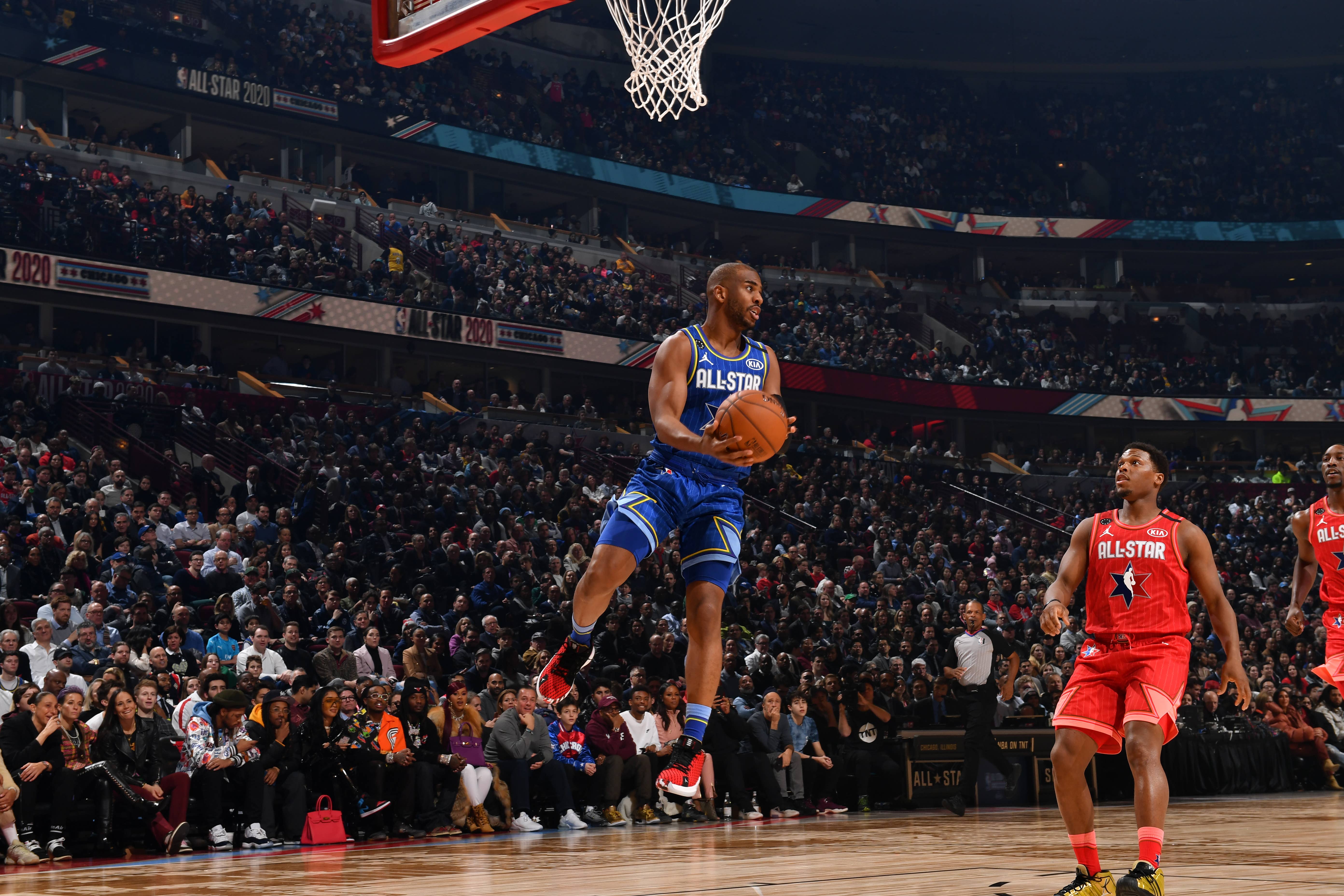
Imagine you, a sports fan, sitting in your living room watching a basketball game, and being flustered for the umpteenth time about another fourth quarter ending. The stoppages in play because of timeouts. The intentional fouls by the losing team to extend the game. Everything that is exciting about an NBA game—the flow and pace—comes to a grinding halt in the final minutes.
Now imagine, in 2007, after watching the same type of disappointing finish in a basketball game over and over again, you decided to actually come up with an idea to change how a basketball game should end. Instead of playing against the clock, at some point in the fourth quarter, the game clock is removed, and a number of points is added to the winning team’s score, allowing both teams to play towards a target score, removing the abrupt change in play once a game reaches its final minutes.
And then, if you can believe it, a decade later, after you’ve studied thousands of college, NBA and Olympic games, poured over every single end-of-game scenarios, written papers, prepared PowerPoint decks, and sent emails to every single person in the basketball community you know, someone finally decided to implement the idea. And a few years after that, the very best basketball players in the world would be playing the fourth quarter of an NBA All-Star Game using your format.
That’s the story of Nick Elam, a Ball State University professor who was introduced to the mainstream last week after the NBA All-Star Game implementated his Elam Ending to the exhibition's format. As Team Giannis and Team LeBron battled back and forth, Elam sat in his third row seats inside the United Center in Chicago, watching his vision unfold.
“There’s no paper that I can write, there’s no interview I can give, there’s no presentation I can make about the concept that speaks for it better than letting it play out itself,” Elam tells Complex Sports. “Having the best players in the world all on one court playing under the format, I just knew it was going to win people over.”
The Elam Ending got its first big break in 2017, when organizers of The Basketball Tournament (“TBT”) responded to Elam’s pitch and incorporated a variation of his proposed change to the game. On the first dead ball with four minutes left in the fourth quarter of each game, teams would stop playing to the clock. Instead, eight points would be added to the leading team’s total, and two teams would play until one team reached the target score.
This tweak removed all of the things that everyone hated about the end of basketball games: rushed possessions against the clock, intentional fouls to extend the game, the winning team having the incentive to simply wind down the clock instead of having to earn a victory down the stretch.
For Elam, it was less about creating a gimmick than fixing what he felt was flaw in the game. “A change should never be gimmicky,” says Elam. “There should be some fundamental issue it is trying to address.”
Another person who was intrigued by the idea was Oklahoma City Thunder point guard Chris Paul, who has watched the TBT for years and coached in the tournament last summer.
“Just being a basketball junkie, you pay attention to things,” Paul tells Complex Sports. “I saw the ending and thought it was interesting.”
Paul has been making suggestions to NBA commissioner Adam Silver for years, especially when it came to the All-Star Game. As part of the league’s competition committee, it was Paul who originally suggested the idea of an All-Star draft, which was implemented in 2018. The motivation behind it was simple. “I had been an All-Star for nine years,” says Paul. “And every year you’re just in the same locker room with the same guys.”
Last summer, Paul made another recommendation to Silver and proposed installing the Elam Ending at the All-Star Game. “I’m all about strategy and the way you have to think the game down the stretch,” says Paul.
The league officially went ahead with the Elam Ending and as another way to honor the late Kobe Bryant, added 24 points to the leading team’s total after three quarters. Two Sundays ago, the two teams played to a target score of 157.
The game went back-and-forth down the stretch and became exactly the kind of ending Elam had envisioned. Paul, who was part of Team LeBron, found himself on the floor as part of the closing lineup in the fourth quarter, and his team was up 154-152. A 3-pointer would have clinched the game.
And then, the basketball strategist in Paul kicked in. During a stoppage in play, the 34-year-old future Hall of Famer told his teammates something they'd rarely hear in a regular basketball game. “If they scored another basket and got to 154,” Paul says, “we were going to intentionally foul.”
It was an exact scenario Elam remembers sketching out on a piece of paper in his dinky apartment back in 2007, when he worked through different end-of-game scenarios, including this specific one. What should a team do when the opposing team is three points from the target score?
Meanwhile, Team LeBron’s offense started to bog down, as every player hunted for the game-clinching 3-pointer. LeBron James missed a three from near the center court logo. James Harden had a chance at the clincher, but was called for an offensive foul on Kyle Lowry.
“I told the guys, hey, if we can get a two, then let’s get a two,” says Paul. “It wasn’t urgent for us to shoot a three because they weren’t at 154 yet. If we had the ball and they were pressuring us, we might as well get to 156 first.”
Team LeBron did just that. James finally went down the lane for an easy basket as Team Giannis was happy to concede a two to extend the game. Now at 156 and one point away from the target, Anthony Davis drew a foul on Lowry and clinched the game by making the second of his two free throw attempts.
Some felt the ending was anticlimactic, but Paul disagrees. “Some games end like that,” he says. “And there’s a lot of pressure on those free throws.”
After the game, Elam ran into deputy commissioner Mark Tatum and told him the Elam Ending was a keeper.
Now, the question becomes whether the All-Star Game will become a springboard for the Elam Ending. It doesn’t sound farfetched to see it incorporated at the G League, NBA Summer League, or perhaps an in-season tournaments the league has reportedly entertained introducing. Some have also mentioned the Elam Ending as a worthy rule for overtime during the regular season.
While Paul says he and his All-Star teammates enjoyed the format, he was non-committal when asked about using the Elam Ending in NBA games that matter.
“Right now,” Paul says. “I think our game is fine the way it is.”
Elam is willing to help the league, if they are willing to hear him out, that is.
“I wish they would bring me into the discussion and give me a seat at the table,” says Elam. “They haven’t yet, but I’m going to stay patient and positive that they will eventually.”
The feedback to the All-Star Game has been overwhelmingly positive, and while Elam continues to tinker and fine-tune his idea, he does believe skeptics who think this is a gimmick or too radical isn’t looking at it properly.
“The Elam Ending is not meant to change the game,” says Elam. “In fact, it’s meant to do the opposite. It is meant to preserve the natural style of play. It’s something that’s very sound, which is important, but also very cool, which I think is just as important.”

